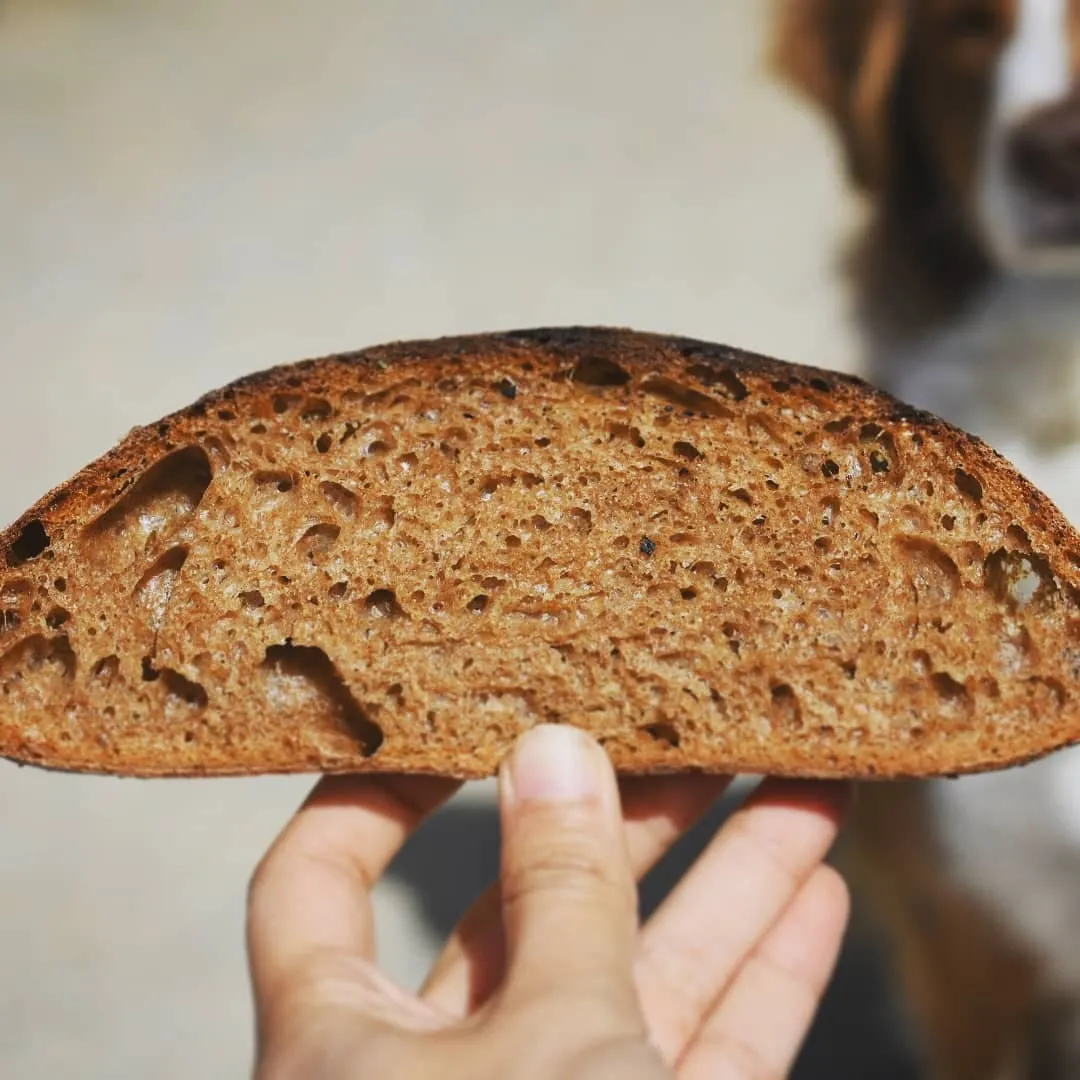
In my most recent (and only) blog post, I've started formally recording my quest for an open & irregular 100% WW Sourdough crumb. I am left with the following impression after my baking experiment:
Is the crux of the bake simply the temperature?
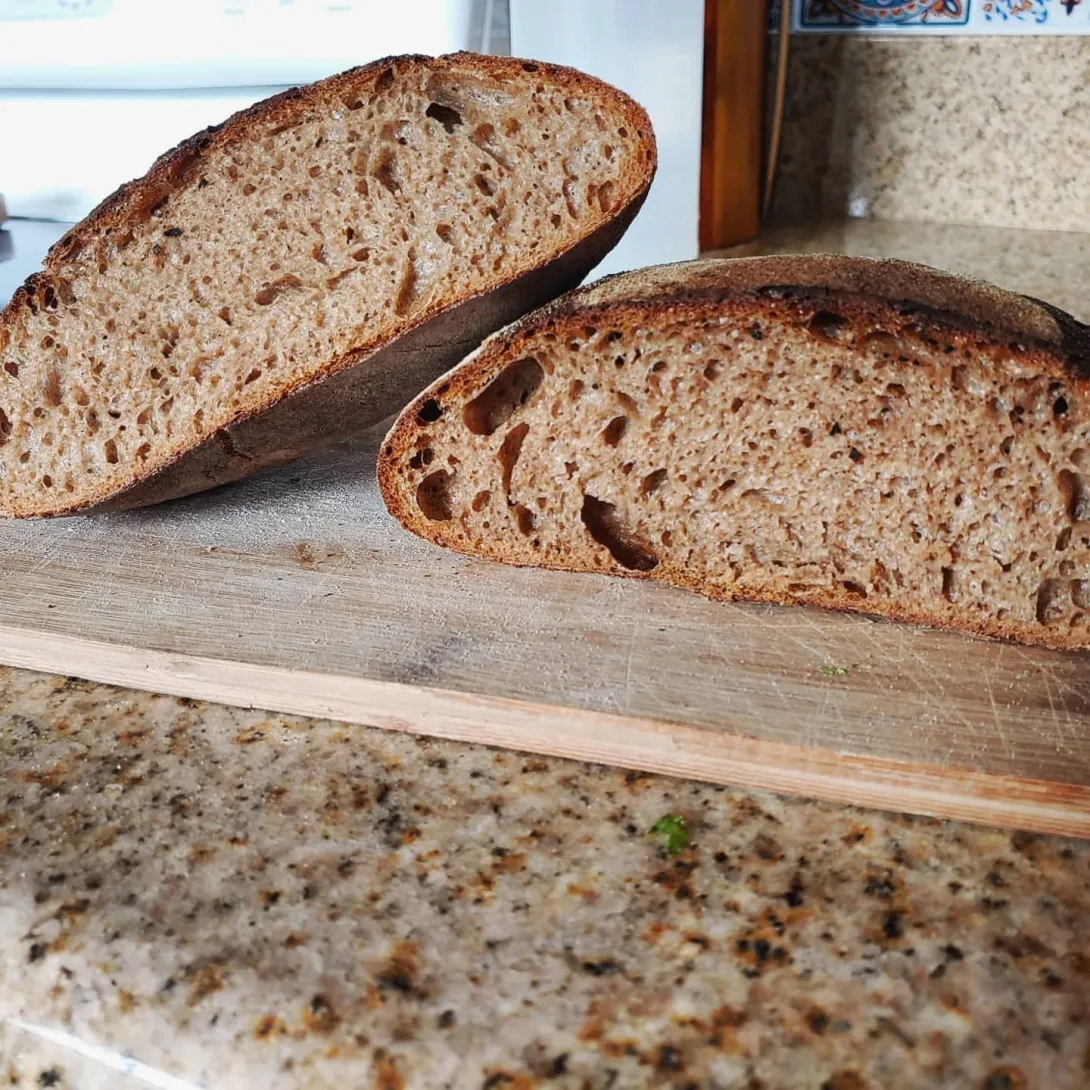
I almost think that this might actually be the major obstacle. I baked two loaves and noticed that the first had a crumb that reminded me of a sandwich loaf baked in a Pullman style pan at a low temperature -- like 350F. This immediately led me to realize that *duh*, WW flour takes on WAY more water, meaning that the dough's temperature is going to respond *far* more slowly to heat. Essentially, I am pretty sure that 100%WW breads loaded into a 450F, or even a 500F oven are spending a decent amount of time baking at an effectively low temperature (meanwhile the crust is hardening).
For my second loaf (which unfortunately had to be retarded overnight, invalidating the rigorous scientific nature of this experiment ?) I preheated my oven to 550 and baked at 515. The result: Big ol' holes and a more open crumb, except in the center where the heat would take longest to propagate.
Based on this, I feel like the most sensible way forward is to play with high temperatures and special shapes to make sure the dough uniformly reaches steaming temps.
A comparison of the two loaves below: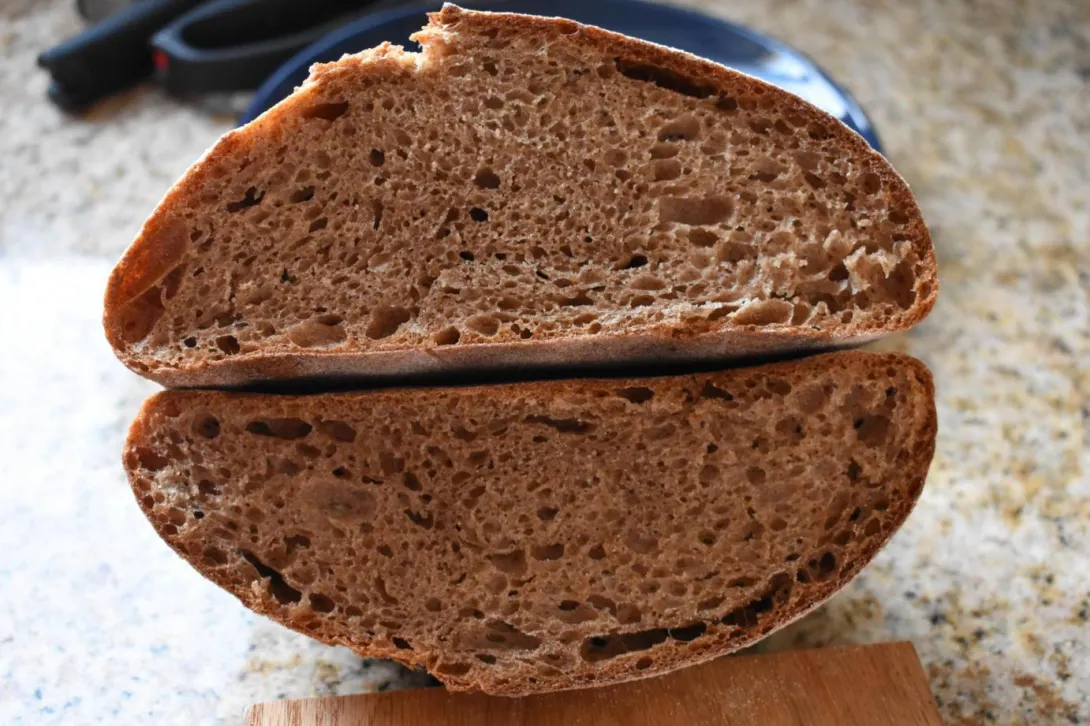
My "pullman crumb" bread above.
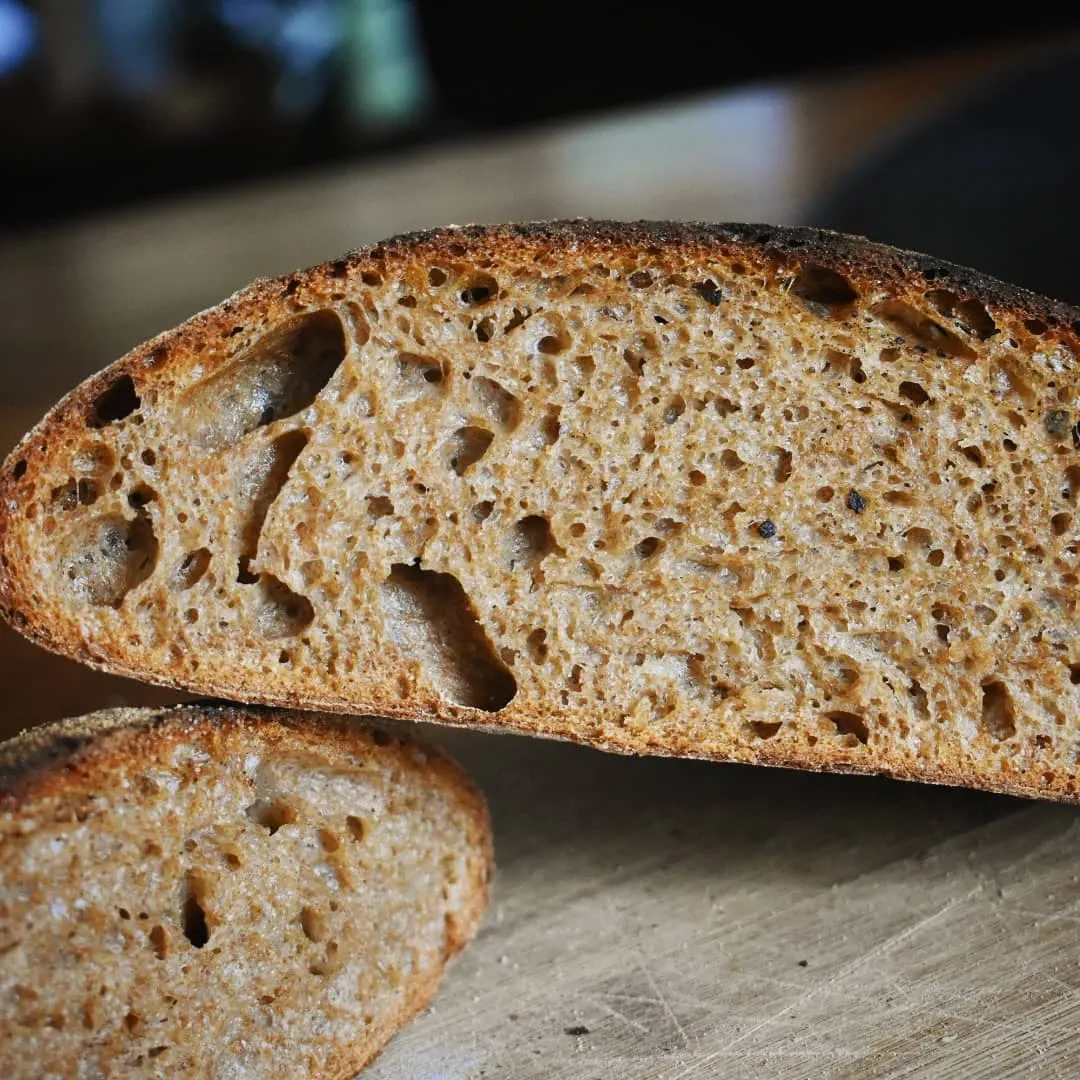
My far more open, and nearly acceptable high-temperature crumb.
Anyone have thoughts? Whole wheat is such a mystery
EDIT: I started eating it and cut into a different part of the bread and wow! Surprise crumb shot anyone? Even better than the center cut!
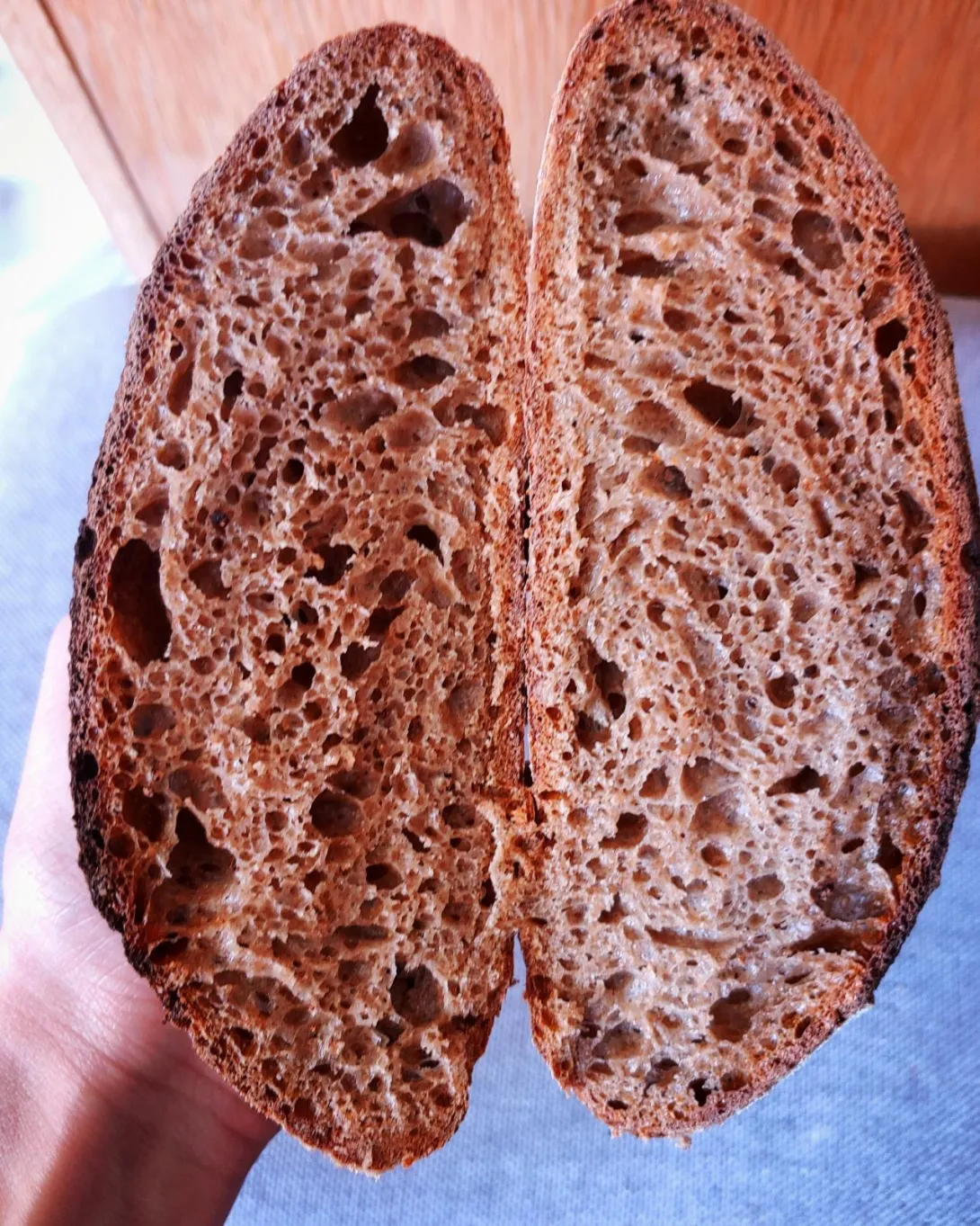
I haven't experimented much with temperature but I can tell you that I bake at 450℉ 100% of the time. I take the lid off after 20 min and usually go another 20 after that.
Interesting suggestion, Had I read this half an hour ago, I would have had another data point for you, but I baked at 500. I will try the next one at 550 and see.
I am on a similar journey as you, the coveted open crumb 100% loaf! I’ve had inconsistent results as well, but Ive found the most important aspect is tight shaping. I’ll experiment with oven temps with my next bake and report back!
Excited to hear about it! I'm doing this recipe again tomorrow and I'm going to try 550 for the first 8 minutes, will let you know if anything other than a burnt crust happens ?
I am also on a quest to figure out how to eek a little more oven spring and open crumb out of my GF sourdoughs. I think the comparison to 100%WW is the most apt for GF baking. I usually am pleased to get a crumb like the "pullman" loaf.
The shaping seems really crucial in my process as well. The part that I'm having a hard time with is when to shape for SD. I get the tightest shape if I shape right before I put it in, however, sometimes I get a dense blob of dough at the bottom of the loaf with this method. I feel like the bread can use some rest, maybe 20 minutes, after shaping but sometimes it either quickly overproofs in shape or seems to loose the tension of the surface. Admittedly I'm a little rusty with the SD proofing and timing after not baking it for many years, but I'm starting to get it down. What's the usual amount of time that 100% WW loaves should rest after shaping and before baking?
I've been experimenting with a higher temp as you've mentioned, starting at 500 for 25 minutes then 450 for the remaining 35. My oven spring has improved! The crumb is still a bit denser than I would like, though..
Are you using a baking stone? The top is so dark compared to the bottom. I bake on a cast iron griddle and @ 515F the bottom would be charred before the top could get any color at all.
I am using a baking stone, but the top is so dark because I ran the bread under the broiler once it was done (SO likes the crust that way ?)
This is very interesting. I'm keen to follow your progress. I've also been curious about the effect of temperature. I had steam issues recently and believe that was leading to premature crust formation. I believe I resolved that particular issue by replacing my baker, but I have also been thinking about temperature, and whether a *lower* temperature might also help postpone crust formation and related crumb compression. Maybe gas expansion rate in the early part of the bake is more critical? There must be some more exhaustive studies or comparisons of baking temperature on crumb out there somewhere.
I'm curious if anyone has seen such a study (along the lines of what is being looked at here, but at a higher scale).
I had come across a resource suggesting higher temperature bakes can lead to premature staling. Perhaps a very high initial temperature followed by a very low temperature is the best of both worlds? So many things to consider!
I can't speak to empirical studies but I can say (after realizing we've never discussed this) that I bake at 450°F from start to finish. I only started doing this because I often get up earlier than the rest of the household and didn't want to risk setting off the smoke alarm. I've been 100% successful in achieving that goal but have not seriously considered whether that's advantageous (or not) to my bakes. It worked well enough the first time and that was that.
Interesting analysis about temperature of the bake. It’s something I hadn’t considered in my recent baking of 100% whole grain breads. I may give this a try in a future bake. Thanks for sharing this.
Benny
I tried a 500 degree bake today and the bread came out pretty well. I can't say it is the temperature that may the difference, because I am a hit and miss baker, but I will try it a few more times.
I tried a 500-degree bake today as well, as this thread got me thinking about it. I was doing a bunch of new things at once, as usual, so I don't have conclusive evidence here. But what I will say is that for my breads (gluten-free, mind you) the 500-degree temp did harden the crust by the 15-minute mark. I know because I accidentally dropped the loaf upside-down onto the oven door as I was trying to get it out of the dutch oven. Usually that kind of move would really smash the dough after only 15 minutes. Even just lifting out of the dutch oven by the parchment paper often smashes the sides. I also did not get as much oven spring as I thought I would, but my scoring wasn't the best on this one. The crust was nice and the texture of the dough was great - no gumminess I sometimes get with GF bakes. So this experiment was interesting in that I am looking for a way to solidify the gel matrix sooner to capture the bubbles as they form, but for the bread I was baking today it might have been a little too hot. I might try 475° next time.
On a side note I'm really eyeballing that Challenger bread pan, or at least a Lodge Dutch Oven that I can invert and cook on the lid so my crumbling parchment paper doesn't break under the weight of transfer.
it seems to me that both options are successful. On the cut, the bread looks appetizing, I see that it does not crumble or crumble. By and large, you can cook bread using either of the two technologies, since it turns out great in both cases. Although the question is still in taste.